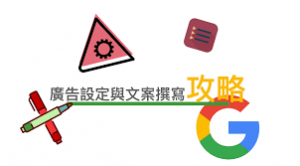There’s great value in simple frameworks, especially ones that work. For a niche technical field like Search Engine Optimization (SEO), it is still best for new E-commerce merchants doing SEO to follow a simple framework that will allow them to get 80% of the results with 20% effort with minimum viable SEO
The following framework is something that we always suggest as a starting framework to get the maximum results with minimum effort, especially for non-technical merchants or marketers.
The 80/20 SEO Framework
80% of your results will come from 20% of the work you did, and the same principle applies to SEO. For one, merchants shouldn’t bother so much with the specific platform or CMS (content management system) they’re using since all major platforms these days follow the best SEO practices.
Build a Solid Base
Even though most platforms these days provide a really good technical site structure that follows SEO best practices, you as the site owner still have to do the basic groundwork in building a solid base. Here are the things one should do based on priority.
SEO Ground Work Priority List
One-off Tasks:
- Verify your site in Google Search Console / Bing Webmaster
- Submit a complete and error-free sitemap
- Link to your site from as many public platforms as possible (case in point: Google My Business is a very good place to link from and it provides your company with a chance to get the elusive rank 0 positions on SERPs.)
- Verify that your robots.txt isn’t blocking indexation
- Apply the correct canonical tags if needed
- Construct a solid and clear site hierarchy
- Build a user sitemap
- Create a clear and structurally-wise internal linking framework
- Set how you want search engines to handle URL parameters on your site
- Check for schema markup or use data highlighter (Google) to let search engines better understand your site.
Recurring Tasks (when you create new pages):
- Apply H1 tags to the most important elements of any page
- Add Image alt texts to your images to help search engines identify your images
- Optimize your anchor tags around keyword/topic clusters
After you’ve done all these technical stuff, remember to just leave them alone and stop tinkering or checking upon them. Obsessing over the small stuff isn’t going to provide any real value. Instead, you should move on to the real hard part in SEO: creating, managing, and optimizing content.
Content Creation <> Content Optimization
After building a solid base with the technical side of SEO, it’s now time to focus most of your effort on the content part. Many merchants don’t understand the importance of content to a website but this is the bread and butter of SEO, without good content, search engines wouldn’t know what your site is about and wouldn’t be able to surface your pages in the search results.
You start this repetitive process by:
- Finding the best keywords to rank for
This step is really not easy but you can still build a system around it and there are plenty of guides on the internet providing details for this process like this one. Just remember that “best” means the keywords that can potentially provide the biggest business value weighted by the difficulty of attaining the top search ranking. - Creating the best possible content for that keyword
For the keyword/keyword clusters that you’ve decided to go after, quickly check the top search results for that keyword. Do you think the pages are providing enough value to searchers? Do you think you (based on your industry/product knowledge) can come up with something that is better than the page that’s ranking for top 1? If yes, then roll-up your sleeves and start creating! - Distribute your content to as many people as possible
After you create your content and publish it on your site, the next step is to let as many people see it as possible. Now there are a lot of ways to do this ranging from social media sharing to buying ads to placing it at a prominent spot on your homepage. The point is to do whatever it needs to do to get as many people to visit that page. - Check what worked and then optimize from learnings
As long as you have all the necessary analytics tools set up, you should be able to gather insights on how yur content is doing. You can use Google Analytics to check the organic traffic of those pages alongside Moz to track the movements in keyword ranking. Are you steadily climbing up the ranks? If not, then you have to revisit your strategy. Maybe you’ve underestimated the difficulty of that particular keyword or maybe you haven’t produced something that’s better than the first few search results and user behaviour on your page tells Google that insight.
At the end of the day, just remember the GOLDEN RULE in SEO:
Do SEO to improve on providing the best possible experience for the user and never do it for search engines.
As long as whatever you’re doing is following this simple mindset, you’re on the right track and never have to worry about penalization.






